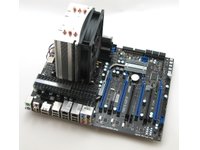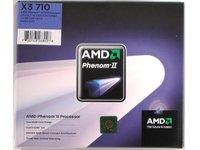Making Lemonade: Overclocking Your Locked AMD Processor
Introduction
Readers of this site are probably well aware of the overclocking potential in AMD’s Phenom II processors. Through CPU reviews, performance comparisons, picture stories, and “How To” guides, Tom’s Hardware has highlighted the hidden potential within these processors and detailed how to attain similar results at home.
From our explorations of the AM2+ or AM3 platform, using basic or extreme cooling, the one constant has been the use of a Black Edition Phenom II—and for good reason. These “unlocked” processors are specifically targeted at enthusiasts who want to squeeze more performance out of the product than they paid for.
This time, however, we’ll specifically look into overclocking a “locked” processor. We chose the AMD Phenom II X3 710, a roughly $100, 2.6 GHz triple-core chip. Though it certainly doesn't lack stock performance or core speed potential, a locked processor such as this one offers far less overclocking flexibility.
What exactly is a locked processor? Specifically, we’re referring to the “locking” of the CPU multiplier and, in the case of this AMD processor, the CPU VID (voltage ID). Actually, both values can be reduced, but they’re locked from being raised above their stock base value.
Taking a look at the equation core speed = CPU multiplier x reference clock, you can see that eliminating the ability to raise the CPU multiplier means any increase in core speed will need to come from raising the reference clock. This will, in turn, raise the HT (HyperTransport) link speed, northbridge speed, and memory frequency, which are also based on the reference clock. If you need a refresher on terminology or calculations, take a look back at this How To: guide.
To cool our retail Phenom II processor, we set the boxed cooler aside and used the Xigmatek HDT-S1283. However, to have any hope of pushing this processor up into the same range as a Black Edition, we also needed a motherboard capable of running a high reference clock. As seen in this motherboard roundup, the MSI 790FX-GD70 stands out as a winner in this area and should allow us to push this CPU to its air-cooled limit.


In this story, we’ll highlight a few different methods of overclocking our locked processor, including conventional BIOS overclocking, AMD’s OverDrive utility, and the 790FX-GD70’s nifty OC Dial. We’ll walk through these three methods, comparing both the experience and results achieved. Finally, we’ll take a brief look at the performance gained by overclocking the CPU, northbridge (NB), and memory.
Get Tom's Hardware's best news and in-depth reviews, straight to your inbox.
-
sohei it's about how to squeeze all performance from an locked cpu .Reply
this is a pro' article (head shot) -
brisingamen great article, should be more like it,Reply
and a few more gaming benches wouldnt hurt either guys!
speaking of headshots yes unreal tournament is probably the most important game to exemplify the value of overclocking and added framerates due to "headshots" and shtuff.
keep up the good work! -
Onus stray_gatorWhat's the point of using a high-end mobo to overclock a mainstream/value cpu?Fair question; no one would likely do this IRL, but I think the point here was to see how high the locked CPU could go, so they used a premium mobo.Reply
Paul, now that we know what this specific CPU can do, would it be useful to now put it on a more typical mainstream mobo and see what one might get from the same chip under more typical conditions?
The point would be to answer the following: if my budget just grew by $25, does it make more sense to buy a BE CPU or to get a more premium mobo? -
haplo602 stray_gatorWhat's the point of using a high-end mobo to overclock a mainstream/value cpu?Reply
because value mobos vary in stability much more than premium mobos. this article was just about the CPU limit, not the mobo limit. -
Tom's should do a shoot-out between an i7 920 and a 965BE that's had the multiplier taken down to 13x(2.6ghz), then both OCed to the max on the northbridge alone. I'm sure that would close the gap atleast somewhat, but I'm interested to see exactly how much. Maybe they could screw around with the HyperTransport multiplier as well, it might turn out that AMD has been shooting itself in the foot with the unlocked multiplier, when more performance would be had if they were forcing people to use the northbridge.Reply
-
Shadow703793 Good write up; but PLEASE do NOT recommend OCing via Windows. Most pro's here will tell you that same thing. BIOS > Windows for OCing.Reply